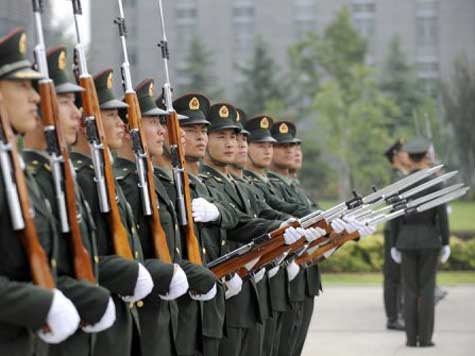While Americans have been held captivated over Slut-Gate, starring a 30 year-old student playing the part of a 23 year-old co-ed law student and Rush Limbaugh playing himself, in which the fate of the Republic rested on the apology heard around the world, China is boosting military spending by 11 percent. In other words, some things in the world are more important than four-letter words on the radio.
Considering that China’s military spending doubled between 1997 and 2003, while 2011 saw a 13 percent increase over 2010, and the addition of even more increased spending this year, this news clearly marks a military build-up in China. However, those figures are hardly reliable and the actual numbers are likely higher.
The increase, reported to be 11.2 percent, is in step with the increased pace of military spending by China over the past decade, but the official statement did not give details of what weapons systems China is developing or offer a description of military strategy beyond protection of the country’s sovereignty. China analysts said the true figure was probably significantly higher and was underreported because much of the military’s decision-making is kept opaque.
While a Far East confrontation is not imminent and to suggest otherwise at this point would be a premature calculation, it does have a ring of certainty. However, to suggest that China is a “different” kind of power has no historical or real-world basis when it comes to great power behavior.
The US has deep and overlapping alliances and treaty obligations in the region. That point was spelled out clearly from President Obama and the Pentagon when it was announced that military cuts will not affect the Asia-Pacific region. It no uncertain terms, the US is set on maintaining hegemony in the region while safeguarding the delicate balance of power. Likewise, China following the model of all emerging powers is set on expanding its own influence and rolling back the US’s. This obviously will come in the forms of expansion of naval power and overseas military bases. The Indian Ocean and South China Sea will be the new playgrounds as China’s commercial and strategical ambitions become possible from continued economic growth.
- China’s new naval strategy of “far sea defense” aims to give Beijing the ability to project its power in key oceanic areas, including and most significantly the Indian Ocean.
- As China emerges as a major global power, it will expand its military footprint across the globe, much like that other great power, the US, whose bases surround China.
- China’s new naval strategy of “far sea defense” is aimed at giving Beijing the ability to project its power in key oceanic areas, including and most significantly the Indian Ocean.
- China has been acquiring naval facilities along the crucial choke-points in the Indian Ocean not only to serve its economic interests but also to enhance its strategic presence in the region.
- China is courting other states in South Asia by building container ports in Bangladesh at Chittagong and in Sri Lanka at Hambantota.
- Recent suggestions emanating from Beijing that China is contemplating setting up military bases overseas to counter American influence.
(See: “China’s Naval Expansion in the Indian Ocean and India-China Rivalry” — The Asia-Pacific Journal).

COMMENTS
Please let us know if you're having issues with commenting.